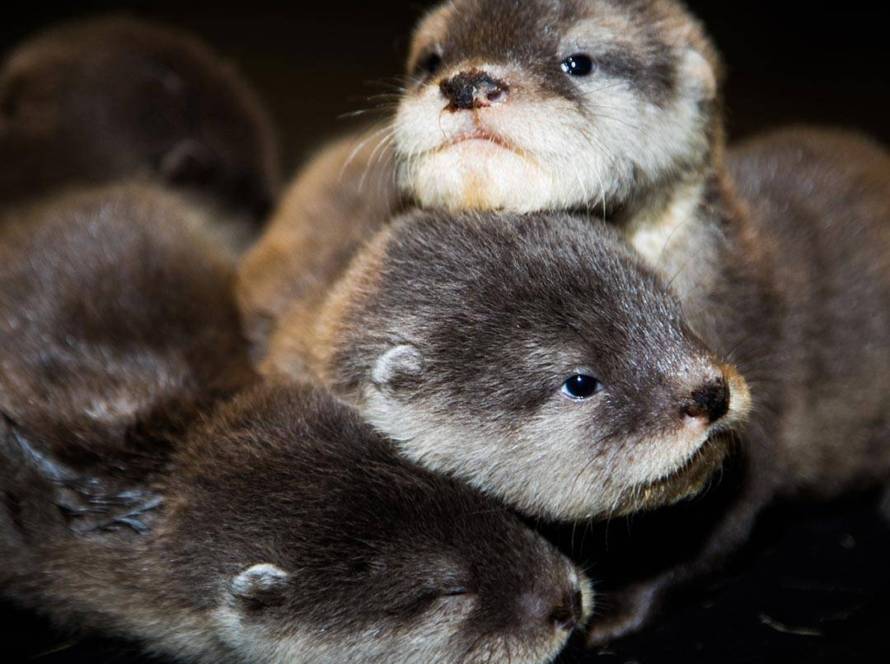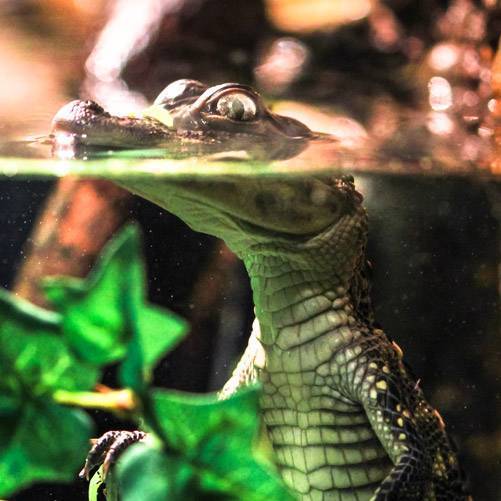Things to Know About Crocodiles
Crocodiles are powerful and impressive predators belonging to the family Crocodylidae, found in tropical and subtropical regions around the world. Crocodiles are considered to be descendants of dinosaurs. Crocodiles, like dinosaurs, belong to a group of reptiles called archosaurs (Archosauria). This group originated about 250 million years ago in the Triassic Period and includes both dinosaurs and modern birds and crocodiles. Dinosaurs ruled for about 65 million years before becoming extinct, but crocodiles evolved and have survived to the present day.
Crocodiles are creatures that have changed very little, retaining features from the Jurassic and Triassic periods. For this reason, they are often called “living fossils”. Crocodiles’ body structure is so well suited for their survival that they were able to survive the revolutionary changes that wiped out the dinosaurs.
Crocodiles have long life spans, with an average lifespan of 70-100 years. Some large crocodile species can live over 100 years. As they are thermoregulatory creatures, they adjust their body temperature according to the ambient temperature. This makes them able to move both in water and on land for long periods of time.
Crocodile Species
Among crocodiles, the most important species are those that stand out for their size, ecological role and interactions with humans. Here are the most important crocodile species worldwide:
1. Saltwater Crocodile (Crocodylus porosus)
- Size: It is the largest crocodile species in the world and males can exceed 6 meters in length.
- Characteristics: One of the animals with the strongest bite force. It is known for its aggressive nature and can live in both salt and fresh water. It is common along the coasts of Australia, Southeast Asia and India.
- Significance: As the largest crocodile species, it is at the top of the predator chain in ecosystems.
2. Nile Crocodile (Crocodylus niloticus)
- Size: 5-6 meters long on average.
- Characteristics: One of the largest predators in Africa. It usually catches large prey and kills them by drowning. Common in rivers and lakes in sub-Saharan Africa.
- Importance: Play a prey-population stabilizing role in African ecosystems and are important because of their interactions with local populations.
3. American Crocodile (Crocodylus acutus)
- Size: 4-5 meters in length.
- Characteristics: One of the few crocodile species that can live in both salt and freshwater habitats. It lives in Mexico, Central America and South Florida. Its aggression is relatively low.
- Significance: Ecologically important as one of the crocodiles that can adapt to salt water.
4. American Alligator (Alligator mississippiensis)
- Size: Can grow up to 4-4.5 meters.
- Characteristics: Especially common in the Southeastern USA (Florida and Louisiana). It is the second of the Alligator species and has a wider snout.
- Importance: It is an important predator in aquatic ecosystems in the Americas and maintains ecosystem balance. It is also a tourist attraction for the region.
5. Gharial (Gavialis gangeticus)
- Size: 4-5 meters long and lives in the rivers of India and Nepal.
- Features: Specializes in hunting fish with its long and slender jaws. It has a very different ecological niche compared to other crocodile species.
- Importance: It is an endangered species and of great importance for conserving biodiversity in aquatic ecosystems.
What do crocodiles feed on?
Crocodiles are carnivores and their diet usually consists of fish, birds, small mammals and other aquatic creatures. Larger species can also take large prey such as wild boar and water buffalo. Crocodiles often lurk near water and quickly attack prey that comes to the water’s edge. After grabbing their prey with their powerful jaws, they pull them into the water. Here they drown their prey and swallow it whole or in pieces after drowning. For particularly large prey, crocodiles perform a movement called the “death spin”. They grab their prey and spin rapidly in the water, thus tearing it apart.
The digestive system of crocodiles is also quite impressive. Thanks to their strong stomach acids, they can digest everything they eat, including bones. They also have a very slow metabolism, so one big meal can keep them full for weeks. This allows them to survive in harsh conditions where they can’t find food for long periods of time.
Crocodiles have one of the most powerful bite forces in nature. Their jaws are so strong that they can easily break a bone they bite into. For example, the bite force of saltwater crocodiles can reach up to 16,000 newtons, which means they have one of the strongest bites in nature. Despite this, their jaw-opening muscles are very weak, so a crocodile’s jaw can be closed even with a simple bandage.
How do crocodiles reproduce?
Crocodiles reproduce by laying eggs. Female crocodiles usually build nests in sandy or muddy areas and lay between 20-60 eggs. Females are extremely protective when laying their eggs in the nest. When the young hatch, their mother carries them to the water and cares for them for several months. Crocodiles are one of the few reptiles that take care of their young.




